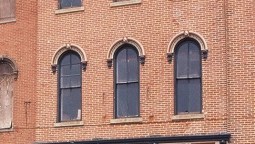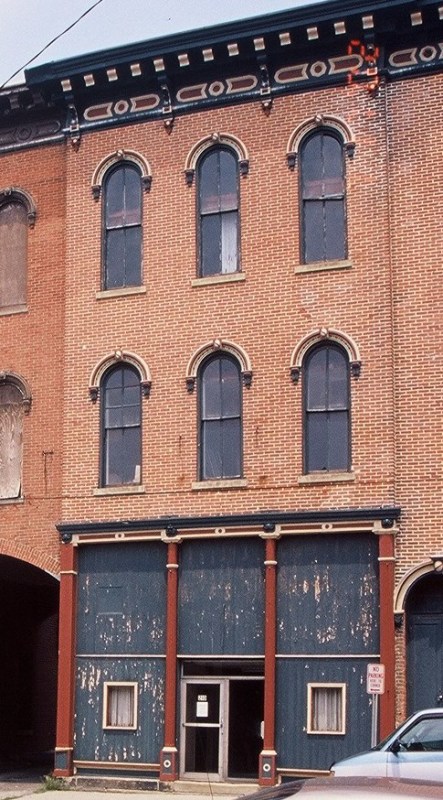The 10% (residential) tax credit…no, really! Pt II
We left off with my promise to share what I found out about the 10% tax credit, and just what you could or couldn’t do with it when it comes residential rehabilitation.
I started by checking out Form 3468 from the IRS, the form you attach to your return (you can view a PDF of the form here). One definite advantage to the 10% credit is the fact that there’s no 3-part process involving the SHPO, the National Park Service, the IRS, and your raft of consultants (depending on the complexity of your project). You report your 10% credit on a three-page form that you include in your annual return. And really, it’s one line multiplying your Qualified Rehabilitation Expenditures by 10%, and entering that total on the last line of the form.
In consulting the 2013 Instructions for Form 3468 (which you can find here) because nothing with the IRS is as easy as writing the total in one line, we learn that the Qualified Rehabilitation Expenditures have to be for “nonresidential rental property.” So what exactly does that mean? Sorry, the IRS can’t be bothered with including definitions for common terms used on the form. That would be…helpful.
However; undaunted, and hot on the trail of this mystery, I google “nonresidential rental property definition” and then I google “residential rental property definition” which brings me to the next IRS publication. IRS Publication 527 covers residential rental property (yep, I’ve got your link for it here) and the IRS gets into property classes. While the classes don’t include “nonresidential rental property,” we do get a definition for “residential rental property” as follows:
This class includes any real property that is a rental building or structure (including a mobile home) for which 80% or more of the gross rental income for the tax year is from
dwelling units….
So, does that mean the inverse applies for the definition of nonresidential rental property? As long as less than 80% of your income comes from dwelling units, is your property defined as nonresidential rental property in the eyes of the IRS? I kept searching.
A fair amount of googling later, I came upon IRS Publication 946, which delves into property depreciation (you glutton…here you go) and the good folks at the IRS included a glossary in the publication. Their definition for residential rental property (sorry, nothing under the Ns for nonresidential rental property) is:
Real property, generally buildings or structures, if 80% or more of its annual gross rental income is from dwelling units.
So, again, do we flip greater than 80% for less than 80% to come to the definition of nonresidential rental property? And, anyway, why should we really care?
And the answer is that there is a lot of potential for the renovation of old, mixed-use commercial buildings, 2- 3- or 4-story, that could use the 10% rehab tax credit, but that don’t, leaving serious incentive money on the table. According to the IRS, as long as less than 80% of your income comes from the residential portion of your building, the IRS categorizes it as nonresidential rental property, and appears to be eligible for the 10% tax credit. And on a $100,000 rehab project, that’s an extra $10,000 in the developer’s pocket at the end. Not bad for filling out a couple lines on your tax return.
Now, since I’m not a lawyer or tax advisor, I’m afraid all I can do is whip you into a frenzy over incentive dollars you could be taking advantage of (or did all the IRS publications already do that?) so please don’t take this as a substitute for consulting your own favorite tax person or lawyer.
If you have your own two cents, or 10%, to contribute to the conversation, I’d love to hear from you. Have you successfully taken the 10% credit on a project with a residential component? Have you uncovered that elusive definition of nonresidential rental property that you would be willing to share? Thanks for reading!
The 10% (residential) tax credit…no, really! Pt I
Every good preservationist knows that rehab tax credits get subdivided into two neat categories: the 20% credit for the rehab of National Register-listed buildings, and the 10% credit for the rehab of non-NR properties constructed before 1936. Every good preservationist also knows that the 10% credit can only go toward buildings with non-residential uses (it says so in the Historic Preservation Tax Incentives brochure that you can check out here).

What if you could use the 10% tax credit on redevelopment projects that included a residential component?
As someone who likes to consider myself somewhat well-versed in the rehab tax credits, you can imagine my surprise when my Historic Real Estate Finance instructor asserted that, in fact, you could use the 10% credit for a project that included a residential component. I remember thinking at the time that that was a good piece of tax credit info to know, and I filed it away in my mind.
Fast forward to yesterday, and Joyce and I were having a conversation with a developer who is redeveloping a non-NR building, constructed before 1936, for mixed use.
So, I bring up the 10% tax credit. The developer would use the 10%, but the building development will have a residential component…and then I pounce.
Well yes, but, did you know you *can* use the 10% on a mixed use project with residential?
However, after piquing the developer’s interest, I realize I can’t exactly defend my position with official IRS definitions, or publication references proving my point. So, I tasked myself with a mini-IRS immersion to first and foremost conclusively prove (at least to myself) that I’m providing useful information a building developer will actually be able to use.
I’ll share my search for definitive answers (and the results) in Part II.


